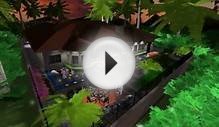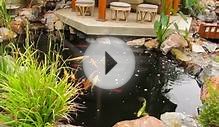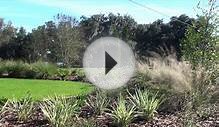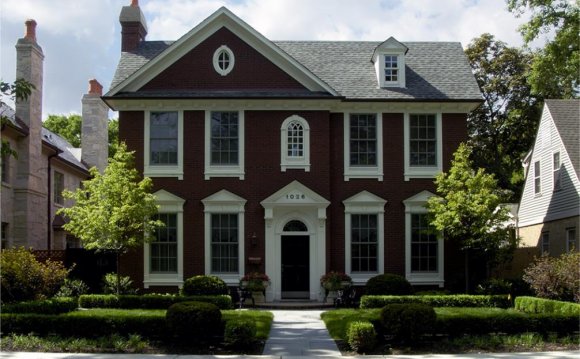
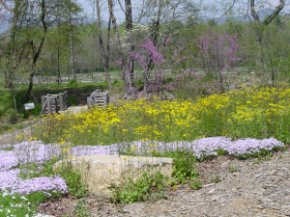 Plants are a keystone to the sustainable landscape and using native plants, drought tolerant plants, and edible plants is one of the easiest ways to promote a more ecologically sensitive landscape. One last thing, please don’t dig up native plants in the wild and don’t plant invasive plants.
Plants are a keystone to the sustainable landscape and using native plants, drought tolerant plants, and edible plants is one of the easiest ways to promote a more ecologically sensitive landscape. One last thing, please don’t dig up native plants in the wild and don’t plant invasive plants.
Why use Native Plants-They can help to create a functional and beautiful ecosystem.
The Eastern Deciduous Forest contains multiple layers with large trees in the canopy layer, smaller trees and shrubs in the understory layer, and groundcovers in the ground layer. When landscapes are designed with native plants that contain this type of layering and are planted in drifts and masses, the landscape becomes more than just a pretty picture. It can become a functional landscape that:
1. Intercepts rainwater,
2. Helps clean the air we breathe,
3. Provides micro climates for us humans who have a low tolerance to wide ranges of cold and heat,
4. Provides habitat for declining species such as honey bees, and
5. Provides relief from the “heat island affect” caused from the built environment (heat reflecting off buildings, roads, and parking lots).
Plants grow in natural associations in conjunction with animals to create plant communities. These communities can serve as models for how to create designs with native plants that foster a healthy balanced ecosystem. Residential landscapes, campuses, business headquarters, urban planting strips, and even institutional and commercial landscapes can be designed to create sustainable landscapes that are modeled after the natural environment. Modeling our human-made landscapes after the natural environment, offers one of the best ways to create a natural looking landscape by planting plants that typically grow together in nature. For example in a wet shady area or drainage area, the landscape design and plant selection could be modeled based on a stream corridor and utilize the same plant palette as those found growing along a streambank. As well, an open sunny area could be planted with native grasses and wildflowers that reflect a grassland or meadow. These native landscapes would require less chemical treatment, less maintenance, less watering, and less petroleum products (for mowing) as compared to a landscape dominated by well-manicured lawn and traditional foundation plantings.
Additional aspects for using plants to help create a sustainable landscape include the use of drought tolerant plantings. While many native plants can handle drought, some native plants grow in the wild in well drained soils or in moist conditions and are just not drought tolerant. In addition sometimes one can’t find the right native plant that will work in a given situation or want to create a landscape that can survive in an extended drought, such as the one we are currently experiencing. In this case, there are plants which are not native but are also not aggressive and invasive and can be part of a sustainable landscape. While these plants will not help create a “sense of place” by preserving the mountain atmosphere and character of the local landscape, they will reduce resources necessary to keep plants alive and thriving during extended dry periods.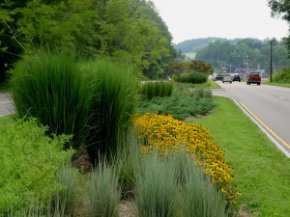 There are however, native plants that are drought tolerant including: Bottlebrush Buckeye, American Beautyberry, Redtwig Dogwood, Strawberry Bush, Fothergilla, Oakleaf Hydrangea, Virginia Sweetspire, Eastern Red Cedar, Inkberry, and Sumac, just to name a few. During the current dry conditions we are enduring in the southeast, the success of drought tolerant native plants and the decline of many of the non-native plants typically used in the landscape has become evident.
There are however, native plants that are drought tolerant including: Bottlebrush Buckeye, American Beautyberry, Redtwig Dogwood, Strawberry Bush, Fothergilla, Oakleaf Hydrangea, Virginia Sweetspire, Eastern Red Cedar, Inkberry, and Sumac, just to name a few. During the current dry conditions we are enduring in the southeast, the success of drought tolerant native plants and the decline of many of the non-native plants typically used in the landscape has become evident.
What about edible plants?
A final consideration in regards to plants and the sustainable landscape is the use of edible plants. Edible plants do not have to be confined simply to a vegetable garden and can be incorporated into just about any type of landscape planting scheme. There are native plants that are edible including several nut producing trees and fruit trees such as Serviceberry, Pawpaw, Blueberries, and several native herbaceous plants. At the John T. Lyle Center for Regenerative Studies at Cal Poly Pomona in California, which is a campus housing and educational center for the university, edible plants were integrated into every aspect of the landscape design. Plantings and traditional foundation plantings contained edible trees such as nut and fruit trees and were interspersed among native shrubs and perennials. A vegetable garden was also built. This provided a supplemental source of food for the community living at the center and illustrated how the landscape could be integrated in an aesthetic and functional capacity. In fact, individual vegetable gardens, community vegetable garden plots, and even local farmers markets are a great way to support the edible landscape.
David Tuch, a plant lover at heart, is a Landscape Architect with Equinox- an Asheville based design and planning firm focused on resource conservation and sustainable development throughout the southeast.
YOU MIGHT ALSO LIKE
